One of the longest ongoing debates in the world of economic trade, politics, and human growth involves the evolution of sustainable development.
What is this sustainable development? Can it create jobs? Reduce the poverty line? Or will a company go bankrupt once sustainable policies are enforced? The economy and its monetary flow are consistently used as the lead priority to influence the current cultural and economic decisions made by some big American corporate brands and politics.
While other international institutions, such as the EU, believe moderation and regulation of resources based on scientific backings would be the true directive in a healthy economy. One of the main questions that arise in sustainability issues is the basis of profit versus environment. On a government, corporate, and individual level, sustainability ideally has the interests of all.
It especially affects those around the world and those in need. Sustainability can be seen making a breakthrough in combining profit with sustainability values using the five elements of Water, Energy, Waste, Ecology, and Food. The elements include micro farming, solar energy expansion, air to water innovations, the universal works of recycling, and sustainable fish farming.
What is Sustainable Development?
Sustainable development is a broad terminology that is inclusive to all forms of growth in maintaining needs for present generations without compromising future generations to come, as defined by the UN. It is also one of the focal points in the subject of environmental conservation and regulation. It can also be defined as the study and maintenance of ecological balances in terms of resources and how natural systems function.
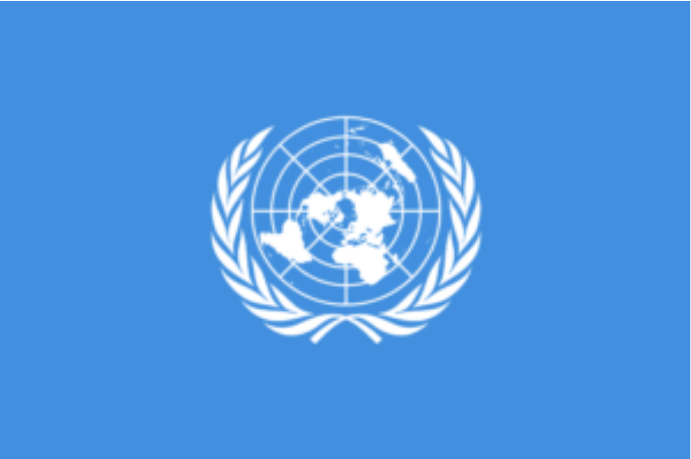
Flag of the United Nations
The term dates back to the United Nations Conference on Environment and Development (UNCED) of 1992 in Rio de Janeiro, Brazil, also known as the Earth Summit. Participation of 117 heads of state and representatives of 178 nations made the Earth Summit the largest gathering of world leaders up to the year 1992. The Earth Summit was the first international attempt to conjure solutions and treaties based on sustainable development for economic development and environmental protection.
The environmental issues were separated into two categories: protection of environmental media and regulations of particular activities and products. Examples of environmental media would include halting deforestation, protecting land resources and protecting freshwater resources.
Examples of activities and products in need of regulation include toxic chemicals, hazardous wastes, biotechnology, and agricultural practices. Sustainable development was the solution originally created at the Brundtland Commission in the 1987 Our Common Future, which was used as the basis of the Earth Summit.
In 2005, the World Summit on Social Development identified the three cores areas of sustainable development, called The Three Pillars of Sustainability. The pillars are economic development, environmental development, and social development, also informally known as profit, planet, and people. These three cores vary in basis, but, are similar in collective goal and place each other into consideration.
In the past, sustainability had been directed on purely environmental concerns that needed to be acknowledged and accounted for. Now, with the involvement of social, economic and environmental interests, it is easier to view sustainability in the grander scheme of stabilizing our planet as a whole.
The Three Pillars
Environmental pillar: It was previously known as the primary reason for sustainability. It continues to play a major role and has been further integrated into the corporate environment.
Economic pillar: The economic pillar has the most innovative potential to combine sustainable practices, technology, and money-making tools.
Social pillar: The social pillar is focused on health, wellness, and education of the people with the quality of life as one of the major priorities.
Everyday Sustainability Initiatives and how the three pillars are interrelated:
- Plant more fruits and vegetable gardens around the house reduces agriculture pollution in waterways and reduces water treatment costs. Less gas is spent for store trips and transportation from different countries and fields. Less money is also spent at the store. Money is spent on vegetation maintenance. It also improves physical and mental health and saves healthcare costs.
- Planting trees, especially around a home, decreases the temperature of the house, which leads to decreased air conditioner use. It also increases the value of the home and reduces carbon dioxide. Kids will play in a more diverse landscape. It also provides homes for small rodents, birds, and insects. Money will be spent on maintaining size and branches of trees.
- Use renewable power sources to reduce carbon footprint and decreases utility bills.
- Conserving and cleaning our natural environment reduces water treatment costs, improves outdoor recreation, and air quality. It provides habitats for other living organisms.
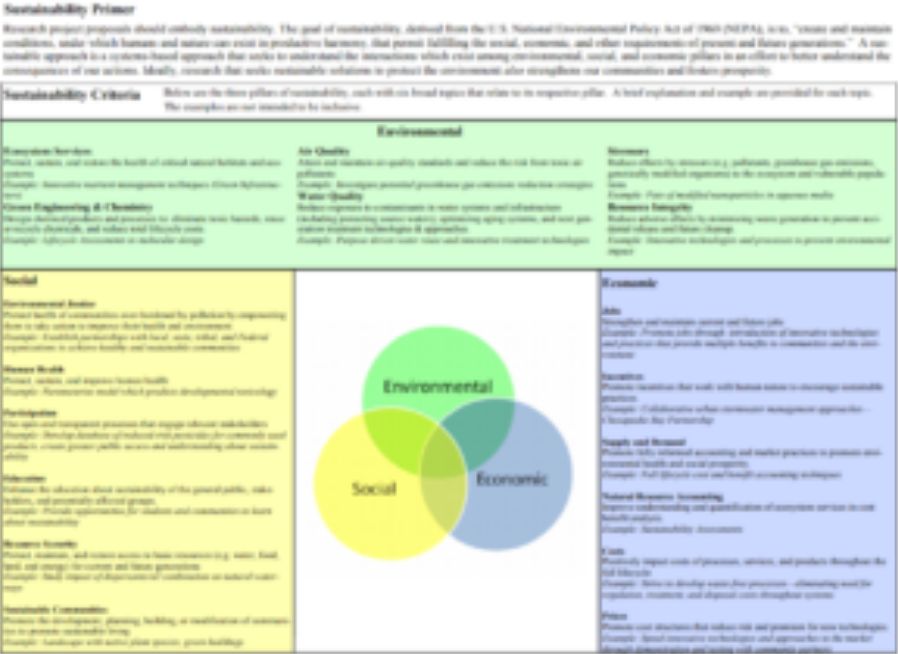
EPA | Sustainability Primer
How Sustainable Development is Relevant to 21st Century Growth
Technology is advancing society more rapidly than ever, while many other parts of the world are unable to adapt to the momentum of change. There are yet many economies around the world that struggle to increase their GDP and provide for impoverished sectors of their societies.
According to World Bank, 10 % of the World’s population makes less than $1.90 in U.S. dollars compared to the 1990 statistic of nearly 36%; however, the 10% still accounts for nearly 736 million people who are living under extreme poverty.
Half the world’s population, 3.4 billion, still struggles to meet basic needs. The lower-middle income countries live on less than $3.20 a day and the upper-middle income countries live on less than $5.50 a day. The situation is similar, but worse, of the environment, where other areas of our society excel while our environment breaks down and struggles under pressure.
Weather.com has sourced that 9 million tons of plastic get dumped into our oceans every year, sea levels have tripled in the rate of rising within the last decade, and extreme weather causes high damage and costs. World forests, as reported by Food and Agriculture Organization of UN, have declined from 31.6 % to 30.6%. The numbers have slowed in the recent past years which show improvement in sustainability initiatives.
But, of course, economic growth can prosper without maintaining the environment or building up the lower class. Is that how it really works? How does one work in a group project? They complete the responsibility they are given. What if the fellow colleagues are unable to provide their documentation because one is unmotivated, the other does not have computer accessibility, or someone “borrows” their pens without returning them to the colleague.

Flickr | Creative Teamwork 2016 | labeled for reuse
A lack in any part of the world can cause major economic issues in other parts of the planet. If Ebola breaks out in a country with poor healthcare, it could kill millions very quickly; thus, the workforce would be down, the healthcare costs would go up, and psychological stress prevents citizens from going outside. If our agriculture and the oceans are not maintained, we will lose major food sources, tourism, and income for countries around the world.
Another major issue confronted by sustainability are the lack of resources to maintain current 21st century lifestyles. At the rate of mass manufacturing and production, the Earth is limited in what it contains. The report “Frontiers of Material Research: A Decadal Survey”, commissioned by National Science Foundation (NSF) and Department of Energy, critiques the lack of available resources that are needed for the growing generation of competition and economic growth.
Areas of particular critical issues include, but are not exclusive to, are computer science and engineering, quantum information science, and digital manufacturing. The reports show strong support for Earth’s environmental sustainability as a gateway for major impact to the future of material science.
The research would work towards sustainable manufacturing, appropriate raw material choice, energy-efficient methods, and recyclability. They wish to combine institutions of government, industry and academia for the interdisciplinary research and growth of material science.

Flickr | labeled for reuse
5 Examples of Sustainable, Economic Progress
Sustainability has been crossing boundaries in all areas of society. With these five basic elements of food, energy, water, waste, and ecology, companies and organizations around the world are taking major steps in creating a society that functions and prospers with sustainability.
1. Food: Micro Farming in Urban/ Suburban Areas
Micro farming, also known as urban farming, is farming on residential or commercial property that is around less than five acres. Micro farming is being encouraged by sustainability groups in order to reduce carbon emissions, increase local economic growth, increase public health, and improve food security.
It can be implemented in many kinds of environments from metro city lots to suburban backyards, and they can produce a variety of crops from nuts to vegetables or fruits.
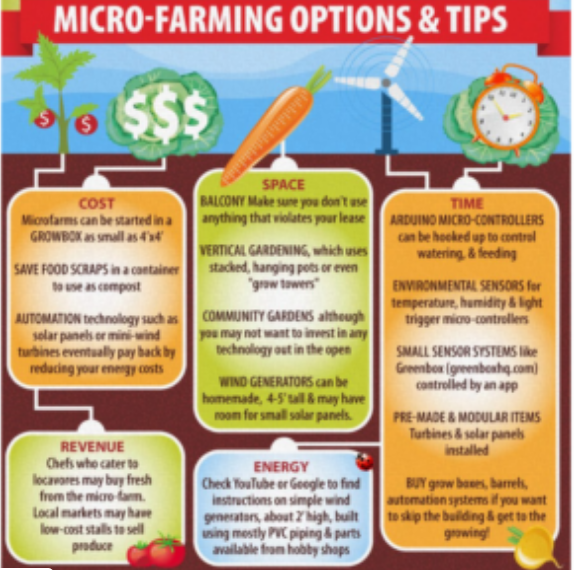
SuperScholar.org | Micro-Farming Tips
Several studies show that organic, micro farming is a low pesticide- high crop yield process, which deems more effective in quantity of per seed, than the genetically engineered(GE), mass manufactured produce. There are other studies that contradict these studies, in support of pro-pesticide agriculture. However, it is highly encouraged in a sustainable perception to use the minimal herbicide and pesticide direction, considering major crops in the United States, such as corn and soy, are becoming herbicide resistant at a 85 % to 93 % level.
Pesticides are potentially toxic and can have acute and chronic health effects. The toxicity ranges from the type of pesticide being used. They can range from affecting the nervous system, hormones, skin, and can even be carcinogenic. Ideally, they are supposed to be absorbed by the vegetation; however, due to irrigation, waterfall, and herbicide resistance increasing, pesticides leak into groundwater and surface water.
Fleet Farming is an non-profit program in Orlando, Florida that install farmlettes, Edible Landscapes, and Fleet Education throughout the Orlando area. It is affiliated with IDEAS For Us and accredited by the United Nations. Multiple studies report an average American meal travels 1500 miles to reach the dinner table. There are 40 millions acres of lawn space maintained by 800 million gallons of gasoline from lawn mowers and they use 30 to 60% of the average cities’ freshwater.
Fleet Farming was created to combine lawn space with agricultural production, reduce carbon emissions, and improve the convenience of healthy, economic food consumption. Fleet Farmlettes is a program that creates model urban farms for communities to learn about sustainable food growth and local farmers markets. It supports local vendors, SNAP Certified Farmer’s Markets, and the Farmlette Hosts. Edible Landscapes is a service that installs and maintains low-maintenance growing systems such as raised garden bed and food forests.
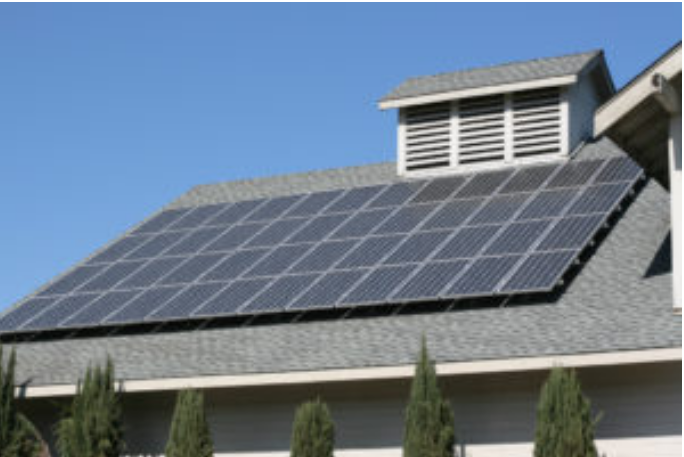
Flickr | Chris Kantos | Labeled for Reuse
2. Energy: Solar Energy for Low Income Families
Low income families in California have the opportunity to participate in California’s Solar Initiative (CSI) that provides a Single-family Affordable Solar Homes (SASH) Program and Multi-family Affordable Solar Homes (MASH) Program. SASH, more specifically, is a program this is administered by Grid Alternatives and funded through a ratepayer-funded program from the California Public Utilities Commission.
The goal of SASH is to offer qualified low-income homes of %80 or below the areas median household income fixed, up-front capacity-based rebates and incentives for solar power systems.
The portable solar power system has been touted as the long run’s vitality because it gets to be more affordable. These are some of the foremost easily-recognizable illustrations of economic development. Solar is driving within the world as the fastest growing renewable vitality source.
One incentive offers $3 per watt. SASH aims to decrease electricity usage, reduce energy bills, decrease solar energy expenses with incentives, and provide job training and employment in energy efficiency.
Funding:
The program was enacted by CA Assembly Bill 2723 in 2009, which directed a minimum of 10% of California Solar Initiative funds(2.2 billion) to be set aside for programs assisting low-income households in Investor Owned Utility (IOU) service territories.
The Assembly Bill 217 (Bradford, 2013) extended the SASH and MASH programs by adding $108 million for funding. Then, in January 2015, the CPUC made the regulatory decision to reauthorize the program. Currently, the program is set to run until 2021 until further notice.
Results:
According to energysage.com, Americans spend an average of over $1,335 a year on electricity, where electricity costs have increased an average of 2.2% in the past decade. Solar panels lock energy costs at a constant rate. Also, if enough energy is pulled from the solar panels, credit is provided for energy used at night while the solar panels are not performing, and can even be carried over to next month, from the gridded energy company.
Since launching SASH, CSI has issued a progress report from July 2018 of the program’s progress in three of California’s serviced territories. There have been around 7,703 PV systems installed and connected, $119 million given in incentive, and 25 MW represented in solar capacity. 7,802 home-owners have been referred to the Energy Savings Assistance (ESA) program.

Flickr | Horia Varlan | Labeled for Reuse
3. Water: Machines that Create Water from Air
From the dry heat in Arizona to the humid temperatures in South Florida, the technology that transforms air into water has been spreading to the hottest areas in the United States. The technology has even gone overseas into the likes of Thailand, Dubai, Israel, and South Africa. The work has been endorsed by well-known tech entrepreneurs, such as Bill Gates, Jeff Bezos, and other investors around the world.
Companies such as Zero Mass Water, Generation Water, Atmospheric Water Solutions, Smart Oasis, and Water-gen have been growing and building around the world to combat the world’s water crisis. 2.5% of the world’s water is freshwater, where an even smaller percentage is what humans can actually consume. According to World Health Organization (WHO) from 2015, 29% of the world’s population (2.1 billion people) does not have immediate access to clean water. In 2025, half the world’s population is not expected to have sufficient clean water access. Technology like this could reduce plastic in water pollution and increase accessibility to areas around the world.
Companies with major impact: Zero Mass Water.
Variations of this technology has been built around the world. Some require access to electricity while others are powered by solar panels. Zero Mass Water is a company based in Phoenix, Arizona that uses twin solar panels installed on rooftops. The technology captures air with a fan and hygroscopic absorbing, which filters dust and pollutants.
Then, minerals are added to provide water similar to spring water. Bill Gates, Jeff Bezos, and other investors have specifically financed Zero Mass Water with $1 billion to the business. It costs $2,000 for each panel (typically 2 panels) to install and provides an output of 2 to 5 liters of water a day. The product has been installed in 18 different countries, such as orphanages in Lebanon to mansions in California. It is especially working with South Africa and Australia.
4. Waste: recycling for money
Recycling is one of the most cost effective and diversive ways to attain products or save money. It is the practice of reusing waste or older items that would normally be discarded. Different kinds of recycling include upcycling, downcycling, E-cycling, or precycling. When recycling, the seller uses a platform such a website, mobile app, recycling center, clothing store, pawn shop, furniture store, or even a garage sale to to sell an old item at a price cheaper than its original value.
This way, the buyer is able to purchase the desired product at an affordable cost. Some people choose to donate their used items instead of asking for money in return. Virtually anything can be reused. Compost from food and feces could be used for gardens. Clothing, shoes, cars, cell phones, blankets, toys, teeth, nails…
Different platforms for recycling:
Websites: Ebay and Amazon are one of the most popular and well-known websites for consumer-to-consumer or business-to-consumer networks and sell almost everything. For supporters of local business, Etsy is a website that sells hand-crafted and unique items made by consumers for consumers.
Applications: Applications such as Letgo and OfferUp are consumer-to-consumer platforms that allow you to buy and pick in convenient locations such as a seller in your own neighborhood. Mercari is an application that is shipping only and provides extra protection to the buyer of the product.
Clothes: There are multiple clothing stores that offer discounts on purchases for donating clothes such as Levi’s, H & M, Madewell, and Kiehls. Stores such as Plato’s Closet offers to buy used current clothes for cheap prices for affordable prices. Websites such as ThredUP and Poshmark give you an online platform to sell used, name-brand clothes at affordable prices.
Glass Bottles, Aluminum Cans, Paper/Cardboard: There are many centers that buy recyclables for five to ten cents a piece.
5. Ecology: Fish Farming as a Sustainable Solution
Fish Farming is the process of growing fish in a net or confined space. It has been growing in popularity as an alternative to fishing in the ocean compared to overfishing, which has been an increasing issue around the world. 80 % of wild fish have been overfished in order to meet population’s demand. The effects of overfishing in the ocean have been significant. Fish farming is also known as a controversial alternative because of its multiple flaws. Popularly farmed fish, such as Salmon, tuna, and cod, are carnivores that consume other fish. Fish farmers have to actually continue fishing in the oceans in order to provide for their own fish farms.
Alternatives to the extra fishing include feeding the fish pellets. These fish pellets are large carbohydrates that fishes’ bodies are not adjusted to eating. The health benefits of consuming fish decreases with fish farms because the fish do not consume their typical diet. Diseases are also more likely to spread in these farms, thus, these farms are filled with antibiotics and chemicals. Farmed fish can also contaminate water quality with their waste and the fish can escape into foreign waters. Does society need to choose between overfishing and fish farms?
How overfishing affects ecosystems
Research led by Jacob Allgeier and Craig Layman, a doctoral student and associate professor respectively, was done from the University of Georgia. Taking place in the Bahamas, it shows the importance of fishing retrospect to what they provide in the underwater ecosystems. Fish are a source of protein for larger predators and other fish to consume. When fish excrete waste (nitrgen and phosphorous), seagrass and algae are fertilized and they are consumed as primary food sources for creatures of the tropical coastal ecosystems.
These ecosystems need the right proportions of phosphorus and nitrogen for algae and seagrass to thrive and expand. The study by UG had observed how fishes and reefs of different sizes affected the expansion of the tropical ecosystems. The results showed that fish at larger reefs produced more nutrients from waste excretion, where the nutrients were in such excess, it spread around 3 meters from the larger reefs. This caused the algae and seagrass to spread. Overfishing is contributing to the imbalance in fish species, which causes the nutrient excretion proportion to destabilize the ecosystems’ primary food source. The lack of fish may as well be destroying a major portion of the ocean’s ability to flourish in its current state.
Improved Fish Farming Techniques:
Current fishing techniques have been improving in order to follow sustainability guidelines and to make fish farming a progressive, profitable alternative. Fix.com sources the older and newer fish farming techniques. One system, called the recirculating system, is a closed, inland process that has little impact on the outside bodies of water. The area needed for this system is smaller than a regular fish farm since the growth rate of fish is high. Waste is treated and used as high-quality fertilizer and the wastewater is filtered and reused. Another fish farming system, 3D farming, uses entire water columns and improves the surrounding ecosystem by acting as a natural filter that removes pollutants. This system farms kelp, scallops, muscles, and oysters, and reduces maintenance for water treatment and pesticides.
The natural seaweed acts as food rich with nutrients. Open pen fish farming still has flaws but has come a long way from its original design. Vaccines are being used on fishes to reduce the excess of antibiotics and fish are fed plant-based fish meal. The pens are also moved around in different areas of the body of water to allow the environment to heal. Scientists and fish farmers are also working on revitalizing a herbivore diet for the fish to flourish. Recently, the fish farming industry has been pushing for indoor farming (recirculated system) to reduce water pollution and threatening the wild fish in lcaotions such as Norway.
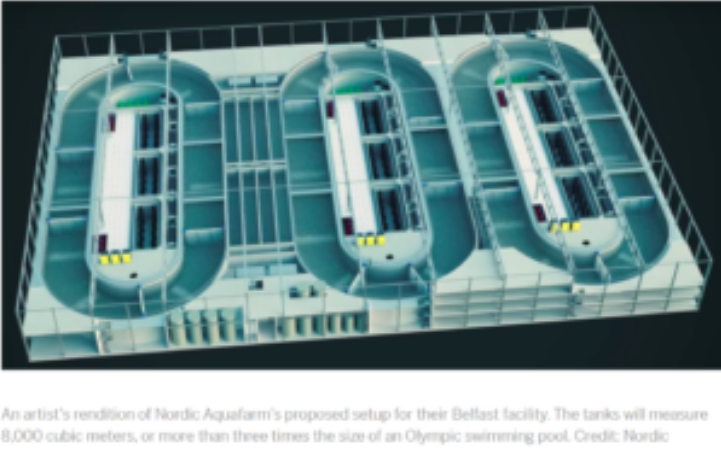
Scientific American | Nordic Aquafarm
Sources
http://www.fao.org/state-of-forests/en/
https://www.worldbank.org/en/topic/poverty/overview
https://www.britannica.com/event/United-Nations-Conference-on-Environment-and-Development
http://www.sd-commission.org.uk/pages/history_sd.html
https://www.environmentalscience.org/sustainability
https://www.epa.gov/sites/production/files/2015-05/documents/sustainability_primer_v9.pdf
https://www.investopedia.com/articles/investing/100515/three-pillars-corporate-sustainability.asp
https://physicsworld.com/a/us-materials-science-faces-resource-threat-warns-panel/
Micro Farming:
https://www.safewater.org/fact-sheets-1/2017/1/23/pesticides
https://superscholar.org/backyard-micro-farming/
https://www.theecologycenter.org/resources/10-ways-urban-farms-benefit-the-community/
https://www.lexiconoffood.com/post/micro-farming-overview
Solar Energy for Low Income families:
https://www.lowincomesolar.org/best-practices/single-family-california/
https://gridalternatives.org/what-we-do/program-administration/sash
http://www.cpuc.ca.gov/General.aspx?id=3043
https://news.energysage.com/much-solar-panels-save/
Recycling:
https://whatis.techtarget.com/definition/recycling
https://www.huffpost.com/entry/sell-clothes-online_n_5a539630e4b0efe47ebb27e8
https://www.businessinsider.com/zero-waste-town-kamikatsu-japan-2017-7
https://www.stylesalute.com/fashion/fashion-news/clothing-stores-that-recycle-donations/
https://www.staples.com/sbd/cre/marketing/sustainability-center/recycling-services/electronics/
https://www.bestbuy.com/site/services/recycling/pcmcat149900050025.c?id=pcmcat149900050025
https://www.businessinsider.com/zero-waste-town-kamikatsu-japan-2017-7
https://www.theguardian.com/environment/2011/mar/18/recycling-waste
Air to Water:
https://www.theland.com.au/story/5678758/fresh-water-from-fresh-air/
https://www.cnn.com/2019/01/31/tech/water-from-air-startups/index.html
Fishing Sustainability:
https://www.fix.com/blog/breaking-down-fish-farming/
https://www.sciencedaily.com/releases/2012/12/121211163545.htm
https://www.scientificamerican.com/article/the-future-of-fish-farming-may-be-indoors/








